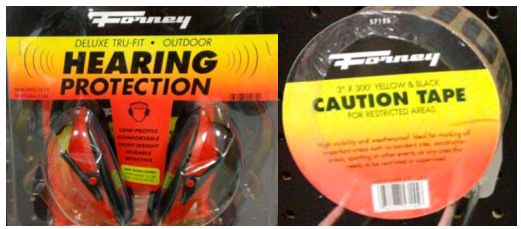Trademark law recognizes that a color can be used to identify the source of products and therefore, enjoys protection under trademark law. Let's test your color brand awareness:
- What can Brown do for you? – shipping services
- The little Purple pill – gastrointestinal medicine
If these colors brought UPS and Nexium to mind, then these companies have done their job in using these colors to identify them as the source of their services and products. This association is often built up over time in a process that trademark attorneys refer to as acquiring distinctiveness.
The Trademark Act recognizes that marks that are inherently distinctive can be registered without additional proof of distinctiveness. Marks that are not inherently distinctive, however, may be refused registration unless the applicant can prove that it has acquired distinctiveness with the relevant consumers. This often requires a significant period of use and advertising expenditures before an examiner will permit registration. The time required to build up sufficient proof of use and expenditure leaves a vulnerable gap since the applicant may have no actionable right to exclude others. This gap may be exploited by competitors to offer competing products with similar packaging.
In re Forney
On September 10, 2018, the USPTO considered whether a Forney's trademark application for a pattern of colors on its packaging could be registered without proof of acquired distinctiveness. In re Forney Industries, ser. no. 86269096. Forney Industries sells a wide variety of hardware products, and packages those products with a black, yellow, and red pattern, as shown in the examples below:

(Photos from USPTO decision in Forney)
Forney applied for a trademark registration for this black, yellow and red color pattern. Upon examination, the Trademark Office refused to register the pattern because it was not inherently distinctive and Forney had not submitted proof that the pattern had acquired distinctiveness.
Forney appealed the Office's decision to the Trademark Trial and Appeal Board to obtain an administrative review. Forney argued that under the Supreme Court's decisions in Two Pesos and Wal-Mart, product packaging can be inherently distinctive and normally is taken by the user to indicate origin. The trademark examiner that reviewed Forney's application countered that despite the Supreme Court's statement regarding product packaging in Two Pesos, the Court in Wal-Mart, discussing its earlier opinion in Qualitex, clearly stated that color can never be inherently distinctive.
Interestingly, Qualitex did not reach the question of whether color can be inherently distinctive, but Justice Scalia in Wal-Mart as well as other commentators have read it that way.
The Issues in Forney
The Board noted that Qualitex, unlike Forney, involved a single color rather than a pattern, and applied color to a product rather than product packaging. With that in mind, the Board asked:
- whether a mark consisting of more than one color can be inherently distinctive? and
- whether there is a different rule for color applied to packaging?
The Board answered both questions negatively, ruling that a color mark consisting of multiple colors applied to product packaging is not capable of being inherently distinctive.
In particular, the Board agreed with Justice Scalia finding that under Qualitex, color can never be inherently distinctive. With respect to the question of whether a pattern of color changed the outcome, the Board found no difference between a single color and multiple colors. Moreover, the Board read Justice Scalia's characterization of color in Wal-Mart, made while distinguishing the Two Pesos case, as providing an overarching rule that color can never be distinctive regardless of its context within packaging or product design.
The Board's interpretation of the Supreme Court's Two Pesos, Qualitex and Wal-Mart cases demonstrates a narrow black-and-white rule when attempting to register color, specifically making proof of acquired distinctiveness a pre-requisite to obtaining a registration for color whether on packaging or a product.
An Ongoing Debate: Two Pesos, Qualitex and Wal-Mart
There has always been debate about whether color can be inherently distinctive when reading Qualitex. In particular, Qualitex limited the issue to whether color could act as a trademark. It did not consider the issue of inherent distinctiveness because the cases below had already established that Qualitex's green gold color had acquired distinctiveness in the market. Justice Scalia's statement that Qualitex held that color requires proof of secondary meaning is dicta since color was not at issue in Wal-Mart. Therefore, the question of whether color can be inherently distinctive technically remains available for the Court to decide. The fact that Forney's packaging bridges the decisions in Two Pesos and Qualitex may provide a vehicle for raising the issue at the Supreme Court. It will be interesting to see if Forney continues to appeal this issue.
Practical Takeaways
In the meantime, the practical outcome of Forney is that we should expect trademark examiners to refuse to register color marks in a packaging context without proof of secondary meaning. Those seeking to claim rights in color marks should use "look for" advertising to foster a consumer's association of the color with them as the source. Consulting trademark counsel to develop a strategy for establishing consistent use, developing look for advertising, and exploring alternate forms of registration is vital to a successful trademark registrations strategy.
The content of this article is intended to provide a general guide to the subject matter. Specialist advice should be sought about your specific circumstances.
